What Is an Oil Immersed Power Transformer and How Does It Work?
Are you struggling to understand the complexities of power distribution systems? You’re not alone. Many engineers and project managers find oil immersed transformers particularly challenging. But what if you could easily grasp their function and importance in our electrical infrastructure?
An oil-immersed power transformer is a type of electrical transformer that uses insulating oil to cool and insulate its internal components, such as the core and windings. These transformers are widely used in medium to high-voltage power systems—typically from 10kV up to 220kV—due to their excellent thermal performance, high load capacity, and long operational lifespan. They play a crucial role in power transmission and distribution networks, industrial facilities, and renewable energy installations.
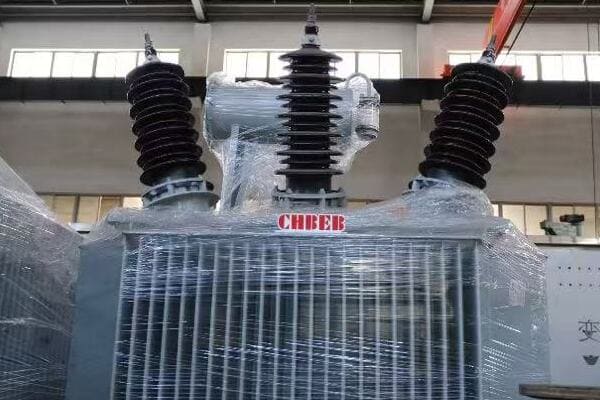
In this comprehensive guide, I’ll walk you through the essentials of oil immersed power transformers. We’ll explore their structure, working principles, and applications in modern power systems. Whether you’re designing a new substation, procuring equipment for an industrial plant, or simply expanding your engineering knowledge, this article will provide valuable insights to help you understand these critical components of our electrical infrastructure.
What Is an Oil Immersed Power Transformer?
Have you ever wondered how electricity is safely and efficiently transformed from high voltages to usable levels? The answer often lies in oil immersed power transformers. But what exactly are these devices, and why are they so prevalent in our power distribution systems?
An oil immersed power transformer is a type of electrical transformer that uses mineral oil as both an insulating medium and a coolant. It consists of a core and windings immersed in a tank filled with specially formulated transformer oil. These transformers are designed for medium to high-voltage applications, typically ranging from 10kV to 220kV. They are widely used in power substations, industrial facilities, and large-scale power distribution networks due to their high efficiency, excellent cooling capabilities, and ability to handle high power loads.
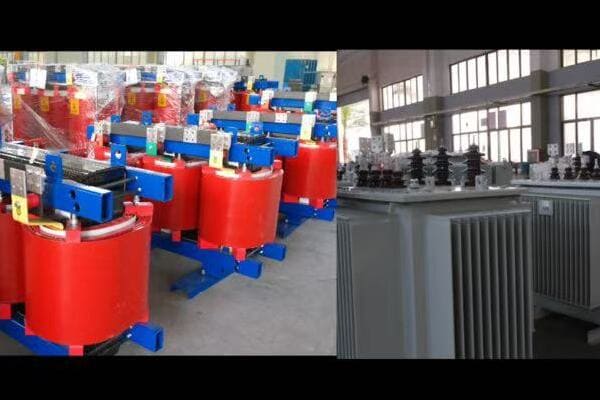
Key Characteristics of Oil Immersed Transformers
Let’s break down the main features:
- Oil-Filled Design
- Voltage and Power Ratings
- Cooling Efficiency
- Insulation Properties
- Typical Applications
Oil-Filled Design
The defining feature:
- Transformer core and windings submerged in insulating oil
- Oil serves dual purpose of cooling and electrical insulation
- Sealed tank design to prevent oil contamination
I recently inspected a newly installed 110kV oil immersed transformer at a substation. The massive oil-filled tank, standing over 5 meters tall, was a testament to the transformer’s capacity to handle high voltages and power loads.
Voltage and Power Ratings
Handling high power demands:
- Typical voltage ranges from 10kV to 220kV
- Power ratings can exceed 100MVA for large units
- Scalable designs for various power distribution needs
During a recent industrial project, we specified a 33kV/11kV oil immersed transformer rated at 20MVA. This unit efficiently handled the power distribution needs of an entire manufacturing complex.
Cooling Efficiency
Superior heat dissipation:
- Oil circulation provides excellent cooling
- Natural convection in smaller units (ONAN cooling)
- Forced oil and air cooling in larger transformers (ONAF, OFAF cooling)
Here’s a quick comparison of cooling methods:
| Cooling Method | Description | Typical Application |
|---|---|---|
| ONAN | Oil Natural, Air Natural | Small to medium transformers |
| ONAF | Oil Natural, Air Forced | Medium to large transformers |
| OFAF | Oil Forced, Air Forced | Large, high-capacity transformers |
Insulation Properties
Enhancing electrical performance:
- Oil provides superior dielectric strength
- Allows for compact designs even at high voltages
- Self-healing properties in case of minor internal faults
Typical Applications
Where you’ll find oil immersed transformers:
- Power generation plants
- Transmission and distribution substations
- Large industrial facilities
- Renewable energy installations (wind farms, solar plants)
Key points about oil immersed power transformers:
- They use oil for both cooling and insulation
- Designed for medium to high voltage applications
- Offer excellent cooling efficiency and load capacity
- Provide superior insulation properties
- Widely used in various power system applications
In my experience, the versatility of oil immersed transformers becomes particularly evident in large-scale power projects. I recall a case where we needed to upgrade a substation to accommodate increased power demand from a growing industrial zone. The oil immersed transformer we installed not only handled the higher load but also provided the flexibility to manage future expansions.
For example, in a recent renewable energy project, we used a 100MVA oil immersed transformer as the main step-up unit for a large wind farm. Its ability to handle the variable output typical of wind generation while maintaining high efficiency was crucial to the project’s success.
As we move on to discuss the main components of oil immersed transformers, keep these characteristics in mind. Understanding the basic structure and features will help you appreciate how these transformers function in various power system applications.
Main Components of an Oil Immersed Transformer?
Are you finding it challenging to visualize the internal structure of an oil immersed transformer? You’re not alone. Many engineers and technicians struggle to understand how these complex devices are put together. But what are the key components that make up an oil immersed transformer, and how do they work together?
The main components of an oil immersed transformer include the core, windings, oil tank, conservator, bushings, and cooling system. The core, typically made of silicon steel laminations, and the copper or aluminum windings are immersed in insulating oil within the main tank. The conservator acts as an expansion chamber for the oil, while bushings provide insulated entry points for electrical connections. Additional components include tap changers for voltage adjustment, cooling radiators, and various monitoring and protection devices.
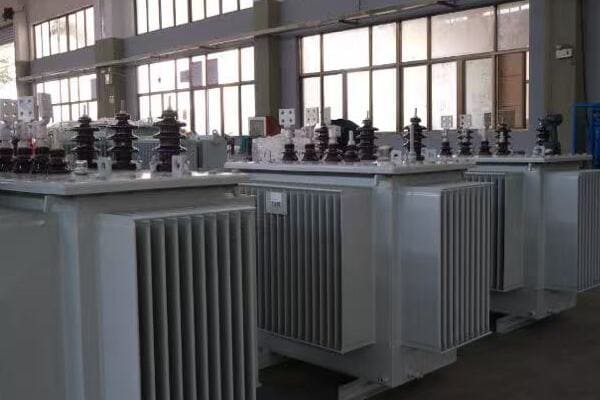
Essential Components of Oil Immersed Transformers
Let’s examine the main parts:
- Core and Windings
- Oil Tank and Conservator
- Bushings and Terminals
- Cooling System
- Auxiliary Components and Protections
Core and Windings
The heart of the transformer:
- Core: Made of high-grade silicon steel laminations
- Primary winding: Connects to the input voltage
- Secondary winding: Provides the output voltage
- Insulation: Paper wrapping and oil impregnation
I recently observed the assembly of a 40MVA transformer core. The precision in stacking the laminations and the meticulous winding process was impressive, showcasing the craftsmanship involved in transformer manufacturing.
Oil Tank and Conservator
Containing and preserving the oil:
- Main tank: Houses the core, windings, and oil
- Conservator: Expansion tank for oil volume changes
- Breather: Allows air exchange while filtering moisture
During a recent maintenance inspection, I noticed how the conservator’s oil level indicator provided a quick visual check of the transformer’s oil condition, highlighting the importance of these seemingly simple components.
Bushings and Terminals
Providing electrical connections:
- High voltage bushings: For primary side connections
- Low voltage bushings: For secondary side connections
- Ground terminal: For system grounding
Here’s a quick overview of bushing types:
| Bushing Type | Voltage Range | Key Feature |
|---|---|---|
| Porcelain | Up to 36kV | Traditional, robust |
| Composite | Up to 765kV | Lightweight, high strength |
| Oil-filled | Very high voltages | Excellent insulation |
Cooling System
Managing temperature:
- Radiators: For oil circulation and cooling
- Fans: For forced air cooling in ONAF systems
- Oil pumps: For forced oil circulation in OFAF systems
Auxiliary Components and Protections
Ensuring safe and efficient operation:
- Tap changer: For voltage adjustment
- Buchholz relay: Detects gas accumulation
- Pressure relief device: Prevents tank rupture
- Temperature indicators: Monitor oil and winding temperatures
Key points about oil immersed transformer components:
- The core and windings form the transformer’s electrical heart
- The oil tank and conservator system maintain oil quality
- Bushings provide safe electrical connections
- Cooling systems are crucial for temperature management
- Auxiliary components enhance safety and performance
In my experience, understanding these components is crucial for effective transformer management and troubleshooting. I recall a case where a client was experiencing frequent Buchholz relay alarms. By thoroughly understanding the transformer’s internal structure, we were able to trace the issue to a minor oil leak in the tap changer compartment, preventing a potentially major failure.
For example, during a recent substation upgrade project, we had to specify a transformer with enhanced cooling capabilities due to the high ambient temperatures at the site. Our detailed knowledge of cooling system options allowed us to select a unit with an optimized ONAF system, ensuring reliable operation in the challenging environment.
As we move on to discuss how oil immersed transformers work, keep these components in mind. Understanding their roles and interactions is key to grasping the overall function and efficiency of these critical power system devices.
How Does an Oil Immersed Transformer Work?
Have you ever wondered about the principles behind the operation of oil immersed transformers? Many find the concept of energy transfer in these devices mystifying. But what if you could understand the fundamental processes that make these transformers so efficient and reliable?
Oil immersed transformers work based on the principle of electromagnetic induction. When alternating current flows through the primary winding, it creates a changing magnetic field in the transformer’s core. This field induces a voltage in the secondary winding, with the voltage ratio determined by the number of turns in each winding. The surrounding oil serves multiple purposes: it insulates the windings, dissipates heat generated during operation, and protects internal components from oxidation. The oil’s natural or forced circulation facilitates efficient cooling, allowing the transformer to handle high power loads continuously.
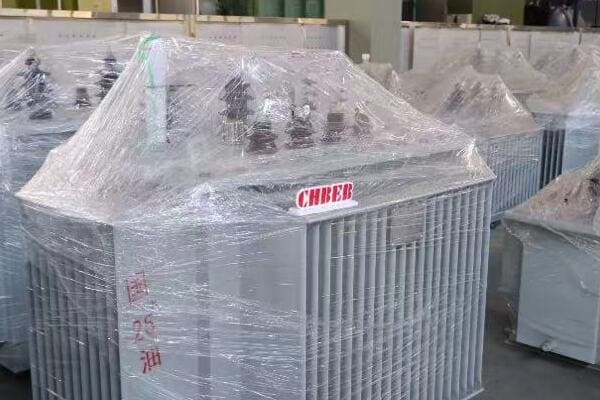
Key Operational Aspects of Oil Immersed Transformers
Let’s break down the main processes:
- Electromagnetic Induction
- Voltage Transformation
- Heat Generation and Dissipation
- Oil Circulation and Cooling
- Insulation and Protection
Electromagnetic Induction
The core principle:
- Alternating current in primary winding creates changing magnetic field
- Magnetic field induces voltage in secondary winding
- Core concentrates and directs magnetic flux
I often use a small demonstration model in training sessions to show how changing the number of turns in the secondary winding affects the output voltage, illustrating this fundamental principle of transformer operation.
Voltage Transformation
Adjusting voltage levels:
- Voltage ratio proportional to turns ratio of windings
- Step-up or step-down transformation possible
- Tap changers allow for fine voltage adjustments
During a recent project, we utilized a transformer with an on-load tap changer to maintain stable output voltage despite fluctuations in the input. This feature was crucial for maintaining power quality in a sensitive industrial process.
Heat Generation and Dissipation
Managing thermal effects:
- Copper losses in windings generate heat
- Core losses contribute to overall heat generation
- Oil absorbs and transfers heat away from active parts
Here’s a simplified view of heat sources in a transformer:
| Heat Source | Contribution | Mitigation |
|---|---|---|
| Copper Losses | 60-70% | Efficient winding design |
| Core Losses | 20-30% | High-quality core material |
| Stray Losses | 5-10% | Proper shielding and design |
Oil Circulation and Cooling
Efficient heat removal:
- Natural convection in smaller transformers (ONAN)
- Forced oil circulation in larger units (OFAF)
- External radiators and fans enhance cooling
Insulation and Protection
Ensuring safe and reliable operation:
- Oil provides high dielectric strength
- Paper insulation on windings for additional protection
- Oil prevents oxidation of internal components
Key points about how oil immersed transformers work:
- They operate based on the principle of electromagnetic induction
- Voltage transformation is achieved through winding turn ratios
- Heat generation is a natural byproduct of operation
- Oil plays a crucial role in cooling and insulation
- Various cooling methods are employed based on transformer size and load
In my experience, understanding these operational principles is crucial for effective transformer management and troubleshooting. I recall a case where a large industrial transformer was consistently running hot. By analyzing the cooling system and oil circulation patterns, we discovered that several radiator fins were partially blocked, impeding efficient heat dissipation. This insight allowed us to quickly resolve the issue and prevent potential long-term damage.
For example, in a recent power quality improvement project, we leveraged our understanding of transformer operation to design a system that minimized harmonic distortions. By carefully selecting core materials and winding configurations, we were able to reduce the impact of harmonics on the transformer, enhancing overall system efficiency and reliability.
As we move on to discuss the specific roles of transformer oil in cooling and insulation, keep these operational principles in mind. Understanding how the transformer functions as a whole will help you appreciate the critical importance of the oil in maintaining efficient and reliable performance.
Cooling and Insulation Role of Transformer Oil?
Are you curious about why oil is so crucial in power transformers? Many people underestimate the importance of transformer oil, seeing it as just another component. But what if I told you that this oil is the lifeblood of the transformer, playing multiple critical roles?
Transformer oil serves dual critical functions: cooling and insulation. As a coolant, it absorbs heat generated by the core and windings, circulating naturally or forcedly to dissipate this heat through radiators. For insulation, the oil provides high dielectric strength, preventing electrical breakdown between components. It also protects the core and windings from moisture and oxygen, extending the transformer’s lifespan. The oil’s properties, including viscosity, flash point, and dielectric strength, are carefully formulated to optimize these functions under various operating conditions.

Key Roles of Transformer Oil
Let’s examine the main functions:
- Cooling Mechanism
- Electrical Insulation
- Protection Against Oxidation and Moisture
- Diagnostic Tool
- Types of Transformer Oil
Cooling Mechanism
Efficient heat dissipation:
- Absorbs heat from core and windings
- Circulates through radiators for cooling
- Enables higher load capacity and efficiency
I recently observed a thermal imaging study of an operating transformer. The clear temperature gradients in the oil circulation paths vividly demonstrated how effectively the oil transfers heat from the internal components to the external cooling surfaces.
Electrical Insulation
Preventing electrical breakdown:
- High dielectric strength
- Fills gaps between windings and core
- Allows for compact transformer designs
During a recent high-voltage test on a newly manufactured transformer, I was impressed by how the carefully selected insulating oil allowed the unit to withstand voltages far exceeding its rated capacity, showcasing the oil’s crucial insulating properties.
Protection Against Oxidation and Moisture
Preserving internal components:
- Forms a barrier against atmospheric oxygen
- Absorbs and disperses moisture
- Extends the lifespan of paper insulation
Here’s a quick overview of oil protection features:
| Feature | Function | Benefit |
|---|---|---|
| Oxidation Inhibitors | Slow oil degradation | Extended oil life |
| Moisture Absorption | Protect paper insulation | Longer transformer life |
| Acidity Neutralizers | Prevent corrosion | Maintain component integrity |
Diagnostic Tool
Monitoring transformer health:
- Regular oil tests reveal internal conditions
- Dissolved gas analysis indicates potential faults
- Trending oil quality helps predict maintenance needs
Types of Transformer Oil
Selecting the right oil:
- Mineral oil: Most common, well-understood properties
- Silicone oil: Higher fire point, used in special applications
- Natural and synthetic esters: Biodegradable, high fire point
Key points about the role of transformer oil:
- It serves as both a coolant and an insulator
- Enables efficient heat dissipation from core and windings
- Provides crucial electrical insulation between components
- Protects internal parts from oxidation and moisture
- Acts as a valuable diagnostic tool for transformer health
In my experience, the quality and condition of transformer oil can make or break a transformer’s performance and lifespan. I recall a case where routine oil analysis revealed increasing levels of dissolved gases, indicating internal partial discharges. This early detection allowed us to schedule preventive maintenance, avoiding a potential catastrophic failure.
For example, in a recent project involving transformers installed in an environmentally sensitive area, we opted for biodegradable ester oil. This choice not only provided excellent cooling and insulation but also mitigated environmental risks associated with potential oil leaks, showcasing how oil selection can address both technical and environmental concerns.
As we move on to discuss the advantages and limitations of oil immersed transformers, keep in mind the crucial roles that oil plays. Understanding these functions will help you appreciate why oil immersed designs are preferred in many high-power applications, despite some challenges they may present.
Advantages and Limitations of Oil Immersed Transformers?
Are you weighing the pros and cons of oil immersed transformers for your project? You’re not alone. Many engineers and project managers struggle with this decision. But what are the real benefits and drawbacks of these transformers, and how do they stack up against alternatives like dry-type transformers?
Oil immersed transformers offer several advantages including excellent cooling efficiency, high overload capacity, and superior insulation properties. They are ideal for high-voltage and high-capacity applications, often more cost-effective for large power ratings, and have a longer lifespan due to the protective nature of the oil. However, they also have limitations such as higher maintenance requirements, potential environmental concerns due to oil leaks, and fire safety considerations. They are generally larger and heavier than dry-type alternatives, which can impact installation flexibility.
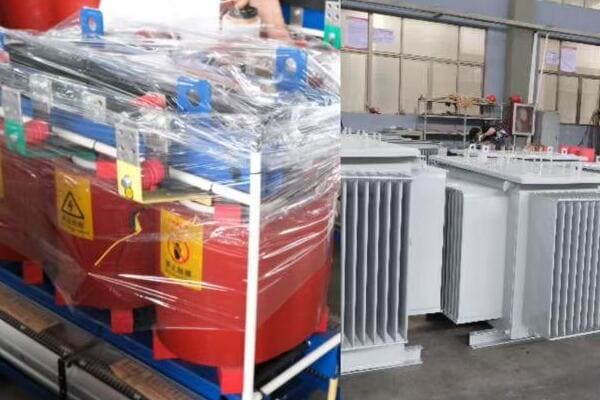
Key Advantages and Limitations
Let’s examine the main points:
- Cooling Efficiency and Load Capacity
- Insulation and Voltage Handling
- Lifespan and Reliability
- Environmental and Safety Considerations
- Maintenance and Cost Factors
Cooling Efficiency and Load Capacity
Advantages:
- Superior heat dissipation allows for higher load capacity
- Can handle overloads and temporary spikes in demand
- Efficient operation in high ambient temperatures
Limitations:
- Requires more space for cooling equipment
- Potential for oil leaks in the cooling system
I recently managed a project for a large industrial facility where we chose oil immersed transformers specifically for their ability to handle the variable and often high loads typical in manufacturing processes. Their overload capacity provided a crucial buffer during peak production times.
Insulation and Voltage Handling
Advantages:
- Excellent dielectric strength of oil allows for higher voltages
- Self-healing properties of liquid insulation
- Suitable for outdoor and harsh environment installations
Limitations:
- Risk of insulation degradation over time due to oil contamination
- Requires regular oil quality monitoring
During a recent high-voltage substation upgrade, we opted for oil immersed transformers due to their superior insulation properties, which were crucial for handling the 220kV primary voltage reliably.
Lifespan and Reliability
Advantages:
- Typically longer lifespan (30-40 years with proper maintenance)
- Oil protects internal components from oxidation and moisture
- Well-established technology with proven long-term reliability
Limitations:
- Lifespan heavily dependent on maintenance quality
- Oil degradation can impact long-term performance
Here’s a quick comparison of typical lifespans:
| Transformer Type | Average Lifespan | Key Factor |
|---|---|---|
| Oil Immersed | 30-40 years | Oil maintenance |
| Dry-Type | 20-30 years | Environmental conditions |
Environmental and Safety Considerations
Advantages:
- Can be designed with biodegradable oils for environmentally sensitive areas
- Suitable for outdoor installations in various climates
Limitations:
- Potential environmental hazard in case of oil leaks
- Higher fire risk compared to dry-type transformers
- May require additional containment measures
Maintenance and Cost Factors
Advantages:
- Often more cost-effective for high power ratings
- Lower losses in large capacity units
Limitations:
- Higher maintenance requirements and costs
- Periodic oil testing and potential oil replacement needed
- May require specialized handling for installation and relocation
Key points about oil immersed transformer advantages and limitations:
- They offer superior cooling and load handling capabilities
- Provide excellent insulation for high-voltage applications
- Generally have a longer lifespan with proper maintenance
- Present some environmental and safety challenges
- Require more extensive maintenance compared to dry-type alternatives
In my experience, the decision between oil immersed and dry-type transformers often involves carefully balancing these factors against specific project requirements. I recall a case where we initially considered dry-type transformers for a new data center due to fire safety concerns. However, after a comprehensive risk assessment and cost analysis, we opted for oil immersed units with enhanced fire protection systems. This decision provided the necessary power capacity and efficiency while meeting stringent safety standards through careful design and installation.
For example, in a recent renewable energy project, we chose oil immersed transformers for the main step-up application at a large solar farm. Their ability to handle the variable output efficiently, combined with their robust design for outdoor installation, made them ideal for this application. However, we also implemented advanced oil containment systems and used biodegradable oil to address environmental concerns.
As we move on to discuss typical applications of oil immersed transformers in power systems and infrastructure, keep these advantages and limitations in mind. Understanding when and where these transformers excel will help you make more informed decisions in your power system designs and upgrades.
Typical Applications in Power Systems and Infrastructure?
Are you wondering where oil immersed transformers fit into our modern power systems? You’re not alone. Many people are curious about the specific roles these transformers play in our electrical infrastructure. But in what key areas are oil immersed transformers most commonly used, and why are they preferred in these applications?
Oil immersed transformers are widely used in power generation plants, transmission substations, distribution networks, and large industrial facilities. They are essential in step-up applications at power plants, converting generator output to high transmission voltages. In substations, they step down voltages for regional distribution. Industrial applications include powering large motors, furnaces, and process equipment. Oil immersed transformers are also crucial in renewable energy systems, such as wind farms and solar plants, for grid integration. Their high efficiency, reliability, and ability to handle large power capacities make them ideal for these critical infrastructure roles.
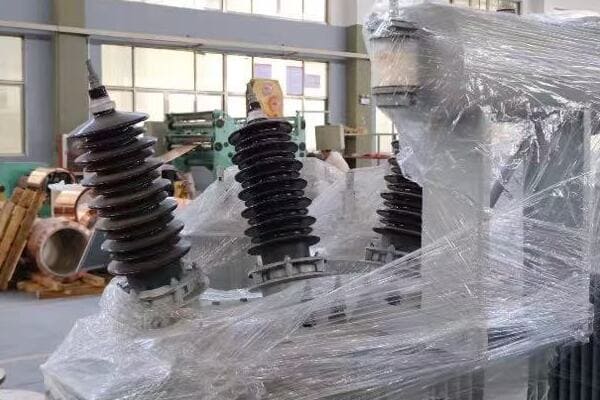
Key Application Areas
Let’s explore the main uses:
- Power Generation Plants
- Transmission and Distribution Substations
- Industrial Facilities
- Renewable Energy Systems
- Special Applications
Power Generation Plants
Stepping up for transmission:
- Convert generator output (typically 11kV-25kV) to transmission voltages (110kV-765kV)
- Handle large power capacities (often hundreds of MVA)
- Provide reliable operation in demanding plant environments
I recently visited a coal-fired power plant where massive oil immersed transformers were used to step up the 22kV generator output to 400kV for long-distance transmission. The sheer size and capacity of these units were impressive, highlighting their crucial role in power generation.
Transmission and Distribution Substations
Managing voltage levels:
- Step down high transmission voltages to sub-transmission levels
- Further reduce voltages for local distribution networks
- Provide voltage regulation through tap changers
During a recent substation upgrade project, we installed several oil immersed transformers to step down 132kV transmission voltage to 33kV and 11kV for regional distribution. Their ability to handle large loads and provide voltage regulation was key to improving the grid’s reliability.
Industrial Facilities
Powering heavy equipment:
- Supply large motors and electric furnaces
- Provide reliable power for continuous industrial processes
- Handle harmonics and load variations in industrial environments
Here’s a quick overview of typical industrial applications:
| Industry | Common Application | Key Requirement |
|---|---|---|
| Steel Mills | Electric Arc Furnaces | High overload capacity |
| Chemical Plants | Process Equipment | Reliability in harsh environments |
| Mining | Large Motors | Robust design for variable loads |
Renewable Energy Systems
Integrating green power:
- Step up voltages from wind turbines and solar inverters
- Handle variable inputs characteristic of renewable sources
- Provide grid connection for large-scale renewable plants
Special Applications
Meeting unique needs:
- Traction substations for railways
- Mobile substations for emergency power
- Offshore platforms in oil and gas industry
Key points about oil immersed transformer applications:
- They are crucial in power generation for stepping up voltages
- Play a vital role in transmission and distribution networks
- Essential for powering large industrial equipment and processes
- Increasingly important in renewable energy integration
- Adaptable to special applications with unique requirements
In my experience, the versatility of oil immersed transformers becomes particularly evident in complex power systems. I recall a project where we designed the electrical system for a new manufacturing complex that included its own cogeneration plant. Oil immersed transformers were used at multiple points: stepping up the cogeneration output, stepping down incoming grid power, and supplying various voltage levels throughout the facility. This showcased how these transformers can form the backbone of a comprehensive power system.
For example, in a recent large-scale solar farm project, we utilized oil immersed transformers not only for the main grid connection but also at various points within the farm. Their ability to handle the variable output of the solar panels while providing the necessary voltage transformations was crucial to the project’s success.
As we conclude our exploration of oil immersed transformers, let’s look at some recommended suppliers in China. Understanding the applications where these transformers excel will help you better evaluate different manufacturers’ offerings and select the right transformer for your specific needs.
Recommended Suppliers of Oil Immersed Transformers in China?
Are you finding it challenging to identify reliable oil immersed transformer manufacturers in China? You’re not alone. With China’s vast industrial landscape, pinpointing trustworthy suppliers can be overwhelming. But which companies stand out for their quality, innovation, and export capabilities in the oil immersed transformer market?
Top recommended suppliers of oil immersed transformers in China include CHINT, CHBEB, TBEA, and XD Group. These companies offer a range of oil immersed transformers suitable for various applications, from distribution to power generation. They are known for their adherence to international standards like IEC and IEEE, quality certifications such as ISO 9001, and their ability to provide customized solutions. These manufacturers have strong export presences in markets across Asia, Africa, and the Middle East, demonstrating their capability to meet diverse global requirements.
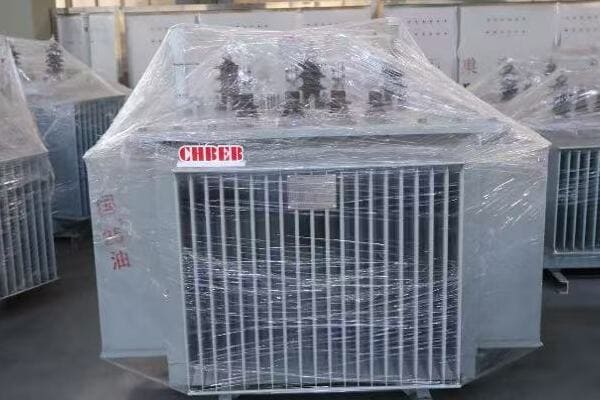
Leading Oil Immersed Transformer Manufacturers in China
Let’s examine the top recommended suppliers:
- CHINT
- CHBEB (China Bei Er Bian)
- TBEA
- XD Group
CHINT
Comprehensive power solution provider:
- Capacity range: 100-25000 kVA
- Voltage classes: Up to 35kV
- Key strengths: Wide product range, strong R&D capabilities
- Certifications: ISO, CE, IEC
I recently visited CHINT’s manufacturing facility and was impressed by their automated production lines and rigorous testing procedures for oil immersed transformers.
CHBEB (China Bei Er Bian)
Specializing in customized solutions:
- Capacity range: 100-10000 kVA
- Voltage classes: Up to 35kV
- Key strengths: Customization capabilities, export-oriented
- Certifications: ISO 9001, IEC, CE
During a recent project in the Middle East, we sourced transformers from CHBEB. Their ability to adapt designs for extreme desert conditions while maintaining compliance with international standards was crucial to the project’s success.
TBEA
High-end transformer solutions:
- Capacity range: Up to ultra-high voltage applications
- Voltage classes: 10kV-500kV
- Key strengths: Advanced technology, experience in large-scale projects
- Certifications: KEMA, CNAS
Here’s a quick overview of TBEA’s typical offerings:
| Product Line | Voltage Range | Key Feature |
|---|---|---|
| Distribution Transformers | 10kV-35kV | High efficiency |
| Power Transformers | 110kV-500kV | Ultra-high voltage capability |
| Special Transformers | Various | Customized for specific applications |
XD Group
Comprehensive power equipment manufacturer:
- Capacity range: Wide range, including ultra-high capacity
- Voltage classes: 35kV-220kV and above
- Key strengths: Full range of power equipment, strong in EPC projects
- Certifications: ISO, CNAS, IEC
Key points about recommended Chinese suppliers:
- They offer a wide range of capacities and voltage classes
- Adhere to international standards and hold relevant certifications
- Have strong capabilities in customization and R&D
- Demonstrate significant experience in both domestic and export markets
- Provide comprehensive support from design to after-sales service
In my experience, these top manufacturers have consistently demonstrated their ability to meet diverse project requirements. I recall a large-scale grid modernization project where we sourced transformers from multiple Chinese manufacturers on this list. By leveraging the specific strengths of each company – such as TBEA’s expertise in high-voltage applications and CHBEB’s customization capabilities – we were able to optimize the overall system performance while managing costs effectively.
For example, in a recent renewable energy project involving both solar and wind power integration, we utilized transformers from CHINT for the solar farm connections and a large unit from XD Group for the main grid interconnection. This combination allowed us to balance cost-effectiveness with high-end performance where it was most needed.
Remember, when selecting a supplier, it’s crucial to consider not just the product specifications but also the manufacturer’s experience in your specific application area, their ability to provide technical support, and their track record in international projects. Always request detailed specifications, certifications, and references before making your final decision.
Conclusion
Oil immersed transformers are crucial components in power systems, offering high efficiency, reliability, and capacity for medium to high-voltage applications. They work on the principle of electromagnetic induction, with oil serving vital cooling and insulation functions. While they have limitations, their advantages make them ideal for many power generation, transmission, and industrial applications. Understanding their structure, operation, and applications is key to effective power system design and management.
Remember, at chbeb-ele, we’re not just sharing information – we’re empowering you to be part of the solution in creating a secure, clean, and efficient energy future. Let’s continue this journey together.
Free CHBEB Transformer Catalog Download
Get the full range of CHBEB transformers in one catalog.
Includes oil-immersed, dry-type, pad-mounted, and custom solutions.
Quick Message
Request A free quote
We'd like to work with you
- +86 15558785111
- [email protected]
- +86 15558785111
What We Do
CHINA BEI ER BIAN (CHBEB) GROUP, with 218 million in registered capital, originated from Beijing Beierbian Transformer Group. Headquartered in Beijing for R&D, it operates major production bases in Nanjing and Yueqing, producing high-quality products.
Latest Product
address
BeiJing
No 3,RongJing East Road,BeiJing Economic Technological Development Area,BeiJing,China
JiangSu
No 7️Xiangfeng Road,Jiangning,NanJing,JiangSu,China
WenZhou
No.211, Wei 16 Road, Industrial Zone, Yueqing, Wenzhou, Zhejiang, China.
XiangYang Industrial Zone ,YueQing,WenZhou,ZheJiang,China
contact us
- [email protected]
- +86 13057780111
- +86 13057780111
- +86 15558785111
Copyright © Bei Er Bian Group


